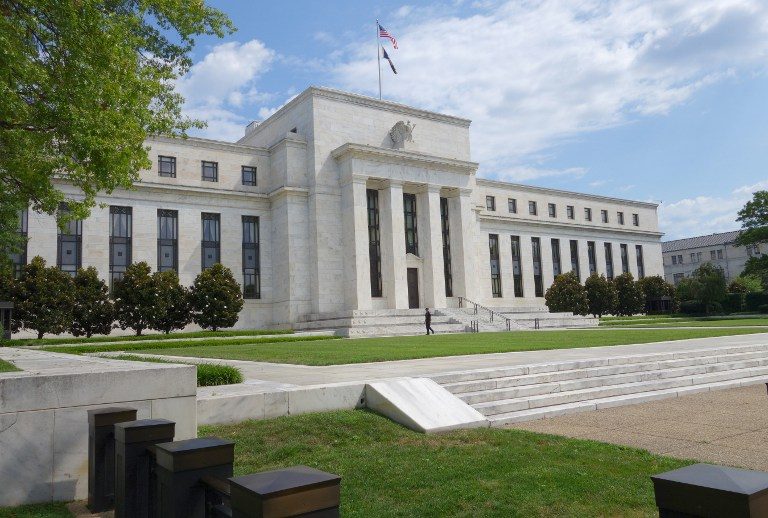SUMMARY
This is AI generated summarization, which may have errors. For context, always refer to the full article.

WASHINGTON DC, USA – The US Federal Reserve raised its benchmark interest rate by a quarter point to 1.0-1.25% on Wednesday, June 14, and signaled another increase remains likely this year, despite the recent spate of weak economic data.
In explaining this second rate hike of 2017 and plans for more increases in the coming months, Federal Reserve Chair Janet Yellen said the move reflected the progress in the world’s largest economy, which continues to add jobs at a solid pace.
“The economy is doing well, is showing resilience,” Yellen said in her quarterly press conference.
“We have a very strong labor market, an unemployment rate that’s declined to levels we have not seen since 2001. And even with some moderation in the pace of job growth, we have a labor market that continues to strengthen.”
And despite recent tepid price pressures, the Fed expects inflation to pick up – eventually, citing “one-off reductions” in certain categories such as cell phone services and prescription drugs as the reason for the recent lower readings.
Those factors mean the Fed’s preferred inflation measure will remain below the two percent target for some time, but will gradually rise to the target level over “the medium term.”
But coming on a day when the consumer price index and retail sales fell, in large part due to falling food and gasoline prices, but with widespread declines in other categories, some economists are saying the Fed is no longer basing its decision on the data, as it has repeatedly said.
“The third rate hike in 7 months, coming not long after a relatively poor Q1 GDP print, suggests the Fed has become less data-dependent in its monetary policy decisions,” Fitch Ratings Chief Economist Brian Coulton said.
One FOMC member, Minneapolis Federal Reserve Bank President Neel Kashkari, dissented from the decision, preferring to keep policy on hold for now.
Third hike coming?
Analysts in recent weeks have become increasingly doubtful there would be a third rate increase later this year, as inflation, consumption and other economic data have indicated the weakness seen in the first quarter has continued.
Fed futures markets now put the chances for another rate increase this year to below 50 percent.
Chris Low of FTN Financial said the Fed “compromised” by continuing the rate increases despite falling inflation, but “the market expects the Fed to take a break.”
However, Yellen said business and household confidence remain quite strong, and echoed the statement from the Fed’s policy-setting Federal Open Market Committee, which repeated its confidence that the economy will continue to expand “at a moderate pace” even with further gradual rate increases.
Asked about the criticism, Yellen said, “I don’t think …the Fed’s credibility has been impaired.”
She once again said the path of interest rates “is not a pre-set course,” but the Fed’s quarterly projections show they still anticipate making a third rate increase this year, with the median federal funds rate ending 2017 at 1.4%.
That would be followed by three rate increases in 2018 and three more in 2019, with the key rate at 2.9% by the end of that period.
Forecasts
In their quarterly projections, Fed officials saw the economy growing slightly faster than previously forecast, with GDP up 2.2% this year, a tenth of a percentage point higher than forecast in March.
But the estimate for the central bank’s preferred measure of inflation, the PCE price index, was cut 3/10 to 1.6%, while the core PCE, which excludes volatile food and energy prices, was cut two-tenths to 1.7%, according to the Summary of Economic Projections.
The Fed now sees the unemployment rate ending the year at 4.3%, where it sits currently, rather than the 4.5% previously expected.
The central bank also confirmed that it will begin later this year to implement a plan to reduce the size of its investment holdings, which were built up to record levels during the financial crisis to help support the economy, especially once interest rates reached zero.
As long as the economy “evolves broadly as expected,” the plan “would gradually reduce the Federal Reserve’s securities holdings,” the FOMC statement said. – Rappler.com
Add a comment
How does this make you feel?
There are no comments yet. Add your comment to start the conversation.